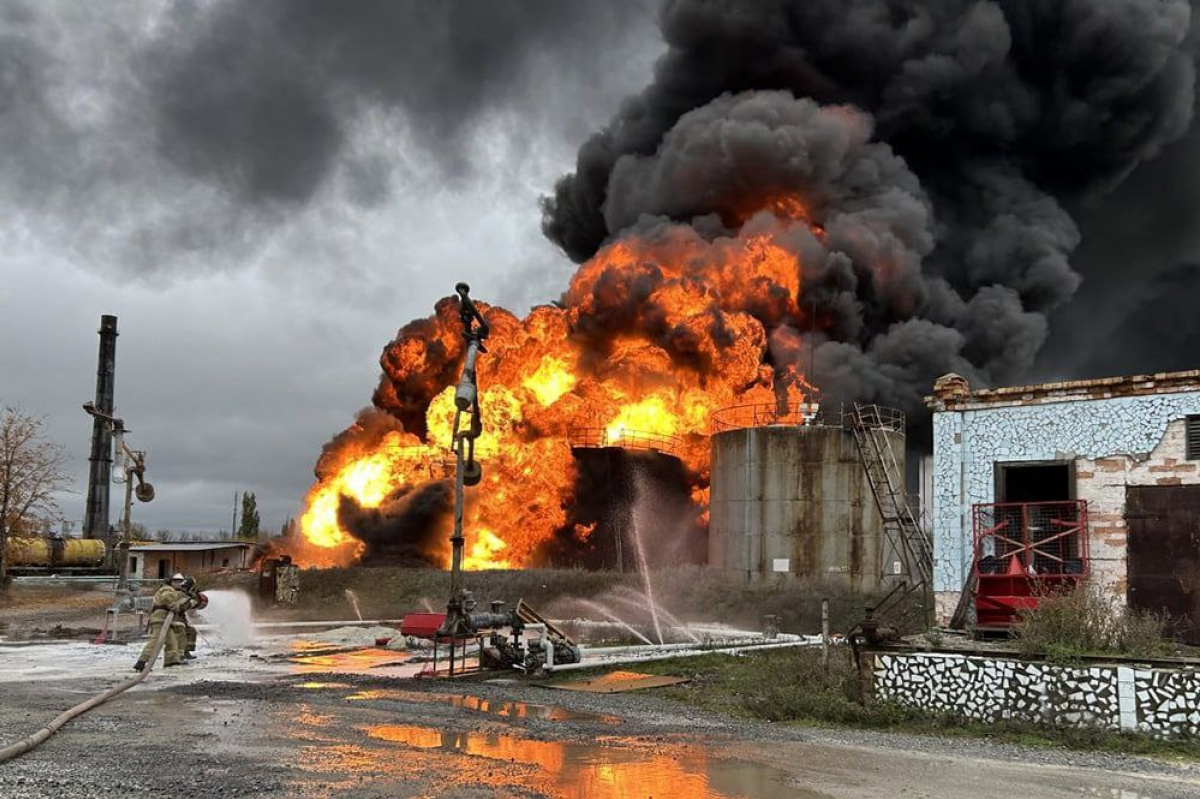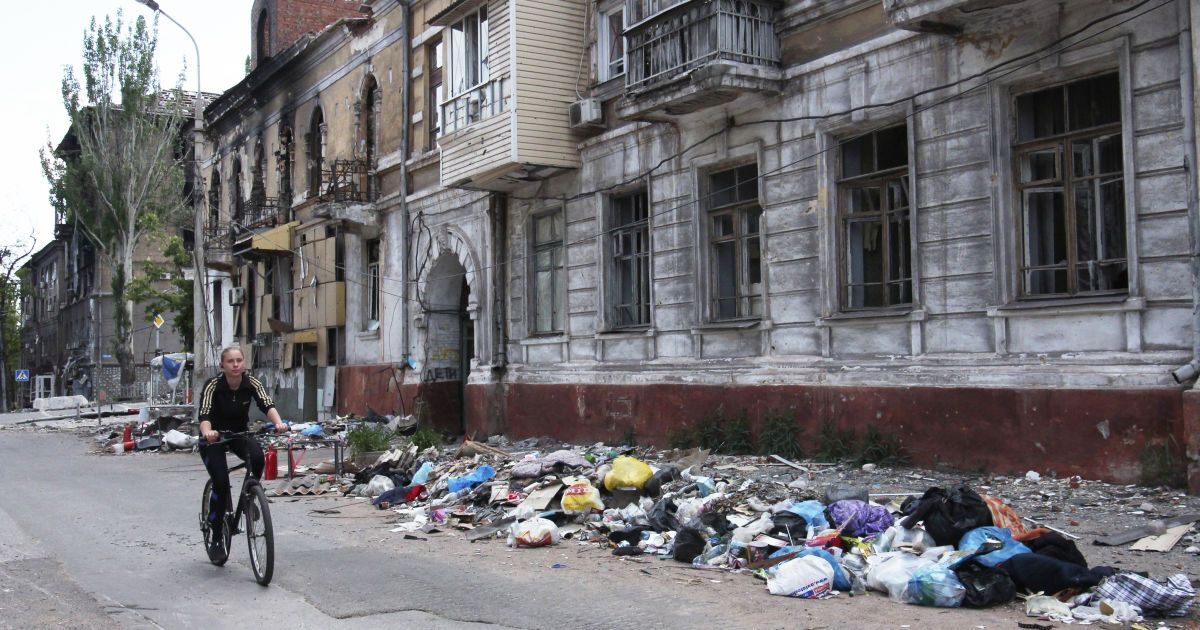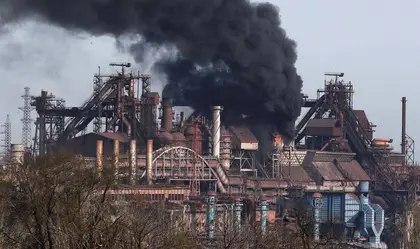One exploded Russian shell in a Ukrainian farmer’s field could potentially:
· Disrupt vegetation and soil structure;
JOIN US ON TELEGRAM
Follow our coverage of the war on the @Kyivpost_official.
· Leak a ‘cocktail of chemical compounds’, including heavy metals, into groundwater, and;
· Cause a wide spread destruction in burning tillable paddocks.
Ranging from such specific impacts to nation-wide ones, a new report released this week identifies the types of environmental damage caused by Russia’s full-scale invasion of Ukraine. It demonstrates that Russia’s war is not limited to the brutal destruction of people and their places, but Ukraine’s environment as well.
Prepared by Green World – Friends of the Earth, Clean Air for Ukraine and other Ukrainian NGOs with Czech support, ‘Environmental Consequences of Russia’s War in Ukraine’ overviews the war’s impact on Ukraine’s air, water, land, and natural and urban systems. Two of the report’s expert authors, Dr Pavlo Khazan and Maksym Kushch, currently serve in the Ukrainian military.
Different Russian military tactics have different impacts on different environmental contexts. The report, for example, notes that increased air pollution is a result of Russian targeting of “oil depots, power plants, communication infrastructure and large industrial facilities that support [Ukraine’s] economy and defence capability… Burning of electrical equipment at such enterprises pollutes the environment with polychlorinated biphenyls (PCBs) and dioxins… a group of toxic and persistent chemicals that negatively affect human health” including adverse impacts on reproduction and nervous systems, and by causing cancer.

EU Transfers €1.5 Bln Raised From Russian Assets for Ukraine
Missile attacks not only directly murder dozens of innocent Ukrainians, but also have a distinct impact on the environment that they rely on for life. “The missiles launched at Ukrainian territory contain hundreds and thousands of kilograms of chemical substances, which after their complete burn or, when their remnants fall into the nature, pollute the environment endangering all species with their toxicity…. One of the factors that also causes danger is considered to be the leftovers of rocket fuel from the downed missiles. Even simple inhalation of the liquid rocket fuel vapours can be fatal,” the report states.

Photo:https://www.ecohubmap.com/
In terms of impacts on water, the report notes that “Ukraine is among the European countries with the biggest water shortage. The situation is aggravated when drowned military equipment and explosions from ammunition emit a set of harmful substances that leak into groundwater and then enter surface waters having a huge negative impact on water resources.”
In a perverse example, the well-documented destruction of some 70 Russian military vehicles during the failed crossings of the Donets River in May 2022, while a military victory, can also be considered an environmental disaster. The report notes: “Every unit of submerged military equipment emits tens and hundreds of liters of petroleum products - a mixture of extremely toxic hydrocarbons.”
An additional impact on Ukraine’s water has come as a result of the damage and destruction inflicted on wastewater and sewage treatment infrastructure. One example in the report is the daily discharge of the equivalent of four Olympic pools of untreated wastewater directly into the Dnipro for some 200 days near Vasilivka in Zaporizhya oblast where wastewater infrastructure was destroyed in the early days of the invasion.
In terms of impacts on land, the report states that “thousands of fired shells, detonated and burned military equipment, abandoned in the fields and plantations, will remain as a massive and unlimited source of contamination of our soils and groundwater with iron, aluminium, copper and other heavy metals and their compounds for hundreds of years.”
When it comes to urban systems, the report makes the point that the massive internal displacement and population shifts that Ukraine has experienced are adding to the unsustainability of some cities. Cities such as Dnipro and Lviv, which have seen an influx of refugees, now have additional pollution and demands put on them from their population growth – and, in turn, from vehicular traffic, from solid waste, from wastewater and sewage, and from energy use.
Often, it seems that brutality toward humans and brutality toward natural and built environments goes hand in hand. The report discusses Mariupol where destruction of the human population was directly linked to making an unliveable urban desert of much of the seaside city.

Photo:https://www.ecohubmap.com/
“After Russian troops surrounded the city, they deliberately destroyed the water supply and sewerage infrastructure of the city. Inhabitants were surviving on supplies of bottled water and in addition were also collecting rainwater as best they could. As the sewage system was out of operation, all sewage and waste products were simply spreading over the streets and into the underground shelters. Due to constant shelling, the city wells and boreholes were quickly contaminated or were simply out of reach to people. According to the eyewitnesses who managed to flee from the city, people who were shot by Russians or killed during the shelling were those, who were out of shelters trying to obtain food and water,” the report reads.
Interestingly, Russia’s war on Ukraine’s environment is also a potential war crime. From 1977, the Geneva Convention has prohibited “the use of methods or means of warfare which are intended or may be expected to cause such damage to the natural environment and thereby prejudice the health or survival of the population.”
Relatedly, there is a strong precedent in international law and processes for compensation for environmental damage. Through the UN Compensation Commission, Iraq was forced to pay Kuwaiti claimants $52 billion for acts such as deliberately spilling 11 million barrels of oil into the Persian Gulf.
At this stage, the report’s findings can be considered indicative, as wartime conditions limit the capacity to undertake fieldwork and scientific measurement of the extent of impacts. The full extent of impacts may not be known for many years.
Indeed, with Russia’s destruction of Ukraine’s environment now in its second year, it may be a long and difficult wait for the Ukrainian farmer before it is safe for him to enter fields filled with unexploded shells and craters.
You can also highlight the text and press Ctrl + Enter






